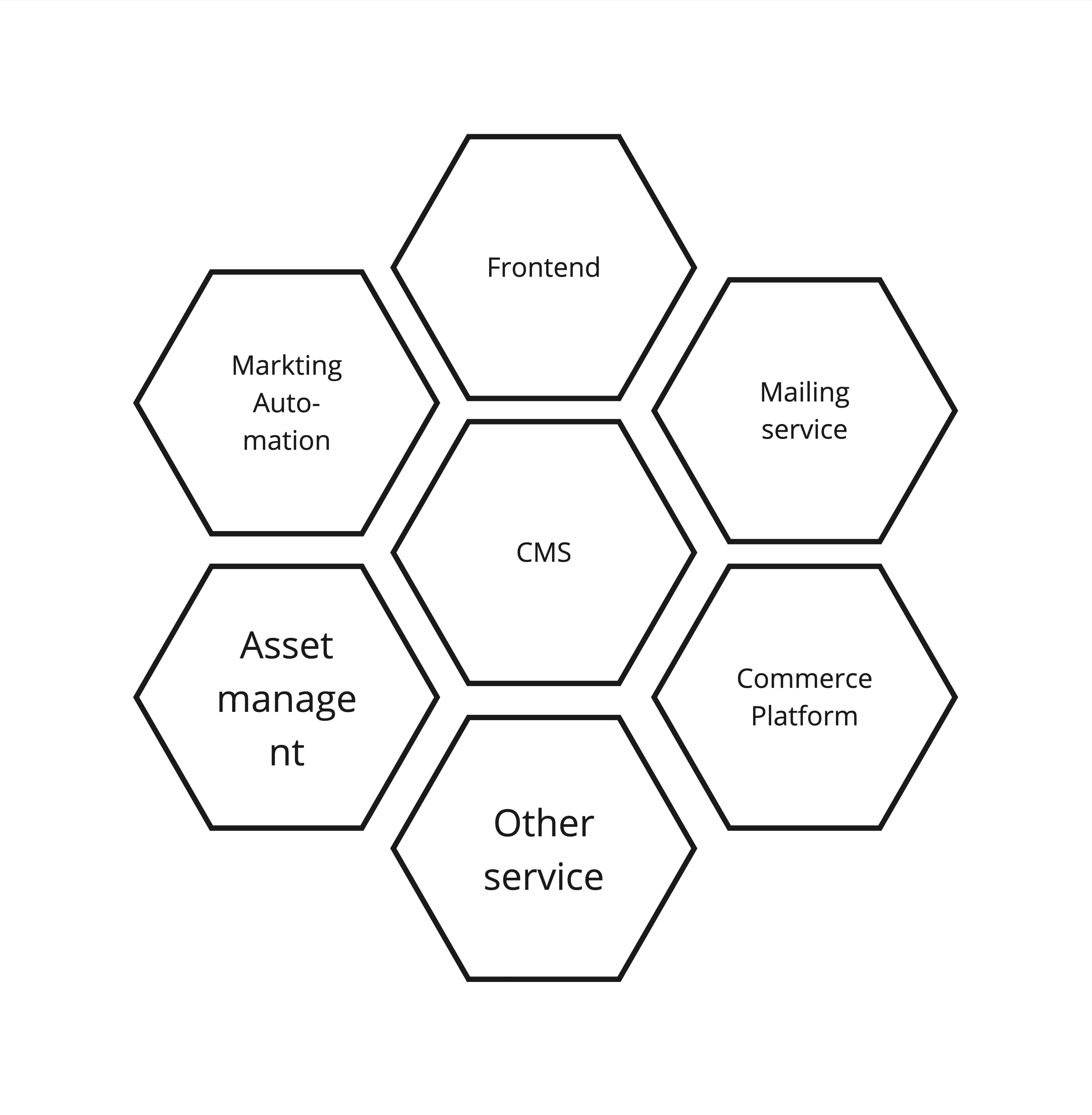What is composable architecture?
To explain what composable architecture is, we must first discuss the more traditional architecture from which it evolved. Until a few years ago, building monolithic platforms was the norm. A monolithic platform aimed to be an all-encompassing solution that handled frontend rendering, content management, mailing, and all other required functionalities of the platform.
In theory, this approach sounds appealing, but in practice, monolithic systems often grow into unwieldy software projects that struggle to keep pace with the speed and agility required in modern platforms.
Composable architecture
Composable architecture is an approach to building applications by creating independent and interchangeable components that work together seamlessly. This structure can be visualized like a Lego set, where various structures can be created depending on how the bricks are assembled.
Consider a commerce platform, for instance. Such systems typically comprise several major functionalities: product management, content management, shopping cart & checkout, mailing services, etc. In a composable architecture, each of these functionalities could exist as a separate service that collectively forms the commerce platform.

Because these services are loosely coupled, there is no strict dependency on any single service. Unlike monolithic platforms, where switching out the content management system is often impractical, in composable architecture, such changes are feasible. For example, you can replace one CMS with another with relative ease, though it still requires effort to implement.
Buy over build
To maximize the efficiency of composable architecture, it's beneficial to adopt a "Buy over Build" strategy. This means opting to purchase existing services rather than custom-building them, preferably through a SaaS solution. While using a service may involve monthly fees, it typically reduces costs associated with development, hosting, and maintenance.
In my experience with building commerce platforms using composable architecture, most building blocks are actually bought services: the commerce engine, CMS, and mailing services. Custom development is often required to integrate these loosely coupled services and to implement functionalities unique to the platform.
When to Choose Composable Architecture
Composable architecture is particularly advantageous in scenarios where you need to deliver a customized experience, require scalability and flexibility, and aim to future-proof your platform. However, it's typically a consideration for projects with larger budgets. If you're just starting your website, a traditional platform will suffice.